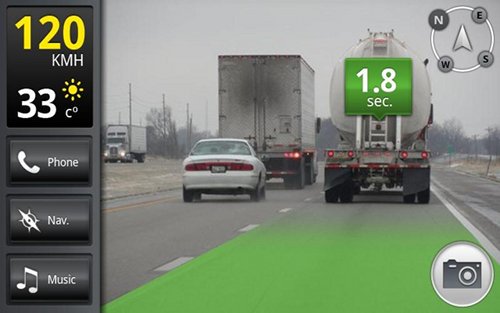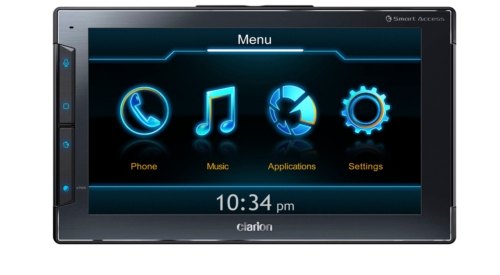Time to stick my neck out once again with my annual GPS predictions!
The future of auto GPS, part one – Safety
 Today and tomorrow, we’ll take a look at a couple of different directions personal navigation device (PND) manufacturers might take in the near future. One possibility is to add some safety-oriented technology.
Today and tomorrow, we’ll take a look at a couple of different directions personal navigation device (PND) manufacturers might take in the near future. One possibility is to add some safety-oriented technology.
GPS predictions for 2012
 As I’ve been doing in recent years, I’ll play the fool once again, by trying to predict what we’ll see in the GPS industry over the next twelve months. I’m certainly being a bit more cautious than the first couple of times I did this, but it also seems harder to predict things now; I don’t know if that is due to the advent of mobile or because so many of the obvious improvements have been made or for some other reason. I‘m also posting this earlier than in past years, since I’m expecting CES news releases that are under embargo to start hitting my inbox any day, and I don’t want to feel limited in what I can say here.
As I’ve been doing in recent years, I’ll play the fool once again, by trying to predict what we’ll see in the GPS industry over the next twelve months. I’m certainly being a bit more cautious than the first couple of times I did this, but it also seems harder to predict things now; I don’t know if that is due to the advent of mobile or because so many of the obvious improvements have been made or for some other reason. I‘m also posting this earlier than in past years, since I’m expecting CES news releases that are under embargo to start hitting my inbox any day, and I don’t want to feel limited in what I can say here.
2011 GPS predictions
 After a fairly successful round of predictions in 2009, I took a real drubbing this year. But glutton for punishment that I am, here comes another batch, though I am trying to be a bit more cautious. On a side note I’m going to have to start doing this post in early December, as multiple companies have already shared their CES news under embargo. So tight-lipped Garmin dominates this year’s predictions!
After a fairly successful round of predictions in 2009, I took a real drubbing this year. But glutton for punishment that I am, here comes another batch, though I am trying to be a bit more cautious. On a side note I’m going to have to start doing this post in early December, as multiple companies have already shared their CES news under embargo. So tight-lipped Garmin dominates this year’s predictions!
2010 GPS predictions
 Despite the relative success of my 2009 predictions, I hesitate to forecast anything this coming year. The GPS navigation market is in flux, undergoing a major shift from PNDs (personal navigation devices) to cell phones. That change, in itself, is fodder for multiple posts, but it also makes this the most difficult year yet to forecast. But hey, at the risk of playing the fool, here goes…
Despite the relative success of my 2009 predictions, I hesitate to forecast anything this coming year. The GPS navigation market is in flux, undergoing a major shift from PNDs (personal navigation devices) to cell phones. That change, in itself, is fodder for multiple posts, but it also makes this the most difficult year yet to forecast. But hey, at the risk of playing the fool, here goes…
A look back at my 2009 predictions
 I haven’t decided if I’ll do a 2010 predictions post yet, but in the process of thinking about it, I decided to take a look at last year’s effort and see how I did. My comments as to the outcome are in italics following each prediction…
I haven’t decided if I’ll do a 2010 predictions post yet, but in the process of thinking about it, I decided to take a look at last year’s effort and see how I did. My comments as to the outcome are in italics following each prediction…
GPS predictions for 2009

Disclaimer: These are predictions and nothing more, so keep your sense of humor and please don’t sue me.
Auto GPS predictions
- A nuvi 8×5 series will bring lane assist and voice recognition together in one unit
- Garmin discontinues the nuvi 200 series; all Garmin nuvi models will now have text-to-speech
- Crowdsourced HD traffic comes to the US with the stateside introduction of the TomTom GO LIVE series
- TomTom releases a GPS receiver that utilizes alternative positioning information for improved accuracy in urban canyons
- More manufacturers display multiple route options visually, ala Dash and Insignia
- Navigon folds, caught between Nextar on the low end and MiTAC’s aggressive promotion of the Magellan line
- Red light camera alerts will move closer to the mainstream
- More downward feature creep — expect to see Lane Assist on some mid-range Garmins, more units with lifetime traffic, larger screens, etc.
- Garmin announces a desktop application (possibly a
revamped MapSource) that allows planning routes with POIs and
transferring them to Garmin units with current City Navigator maps; it
will be set up to allow users to opt into sharing anonymized tracklogs
ala TomTom HOME - Said application will support wireless transfer of data via ANT or Bluetooth
GPS predictions for 2007
2007 is here, and since we just reviewed 2006, it seems appropriate to prognosticate a bit on 2007 (and beyond). Though there is not always a strong line of demarcation between the three, I’m going to break this up into three posts over the next few days, covering GPS predictions, my GPS wish list, and GPS fantasies. Today we’ll look at…
GPS predictions
2007 will see major gains in several areas:
Connectivity
Dash Navigation is leading the way here, with their upcoming release of GPS navigators that use (supposedly) anonymous cell phone data to ferret out live traffic conditions. Their challenge will be getting enough users to achieve critical mass.
TomTom already has connectivity via cell phones through their TomTom Plus services. Look for them to expand the capabilities associated with this program and push it more heavily.
Garmin is taking baby steps with their nuvi 670 and 680, but they are bound to be working on something bigger than that. The question is, what will their major connectivity play look like?
With WiMAX a ways away, and users with cell phone data plans being far from ubiquitous, GPS manufacturers are limited in what they can do right now. This is a year for them to get their feet wet and try some things out.
With connectivity comes security risks though. Look for some major holes to appear as navigation software engineers face a steep security learning curve.


